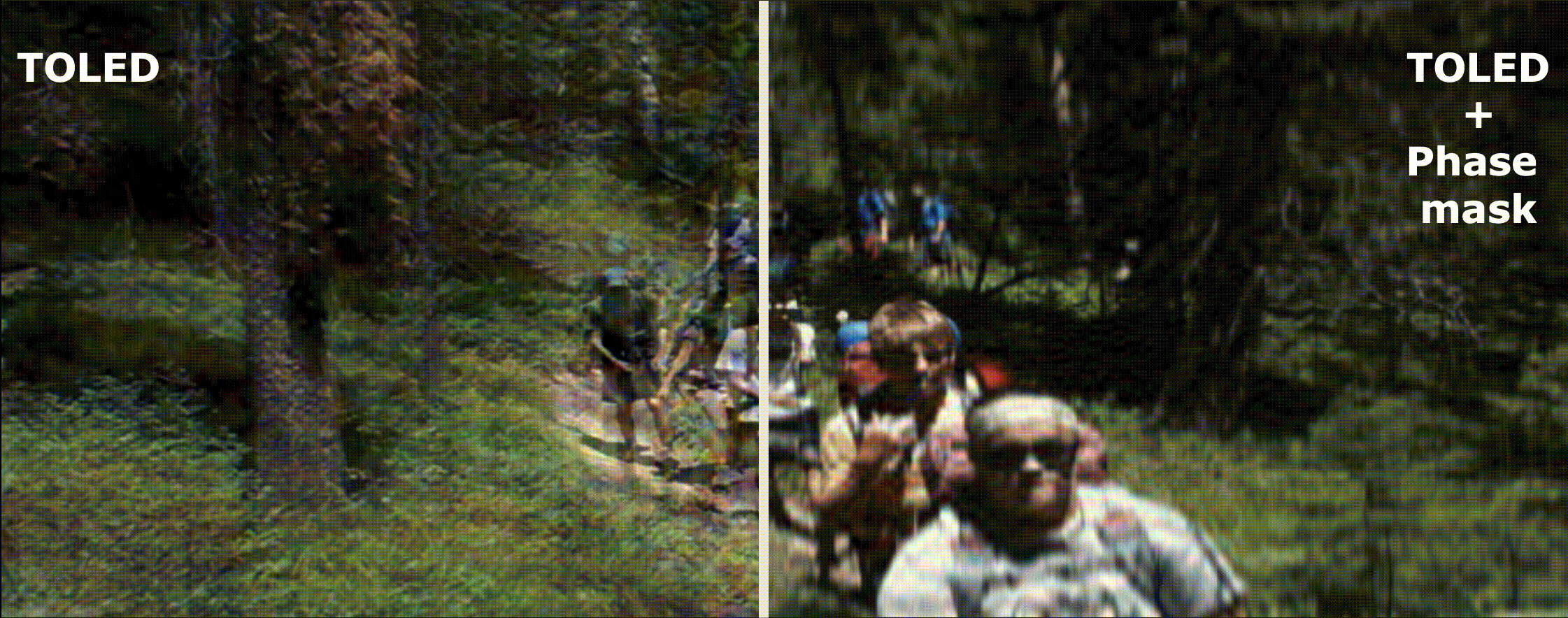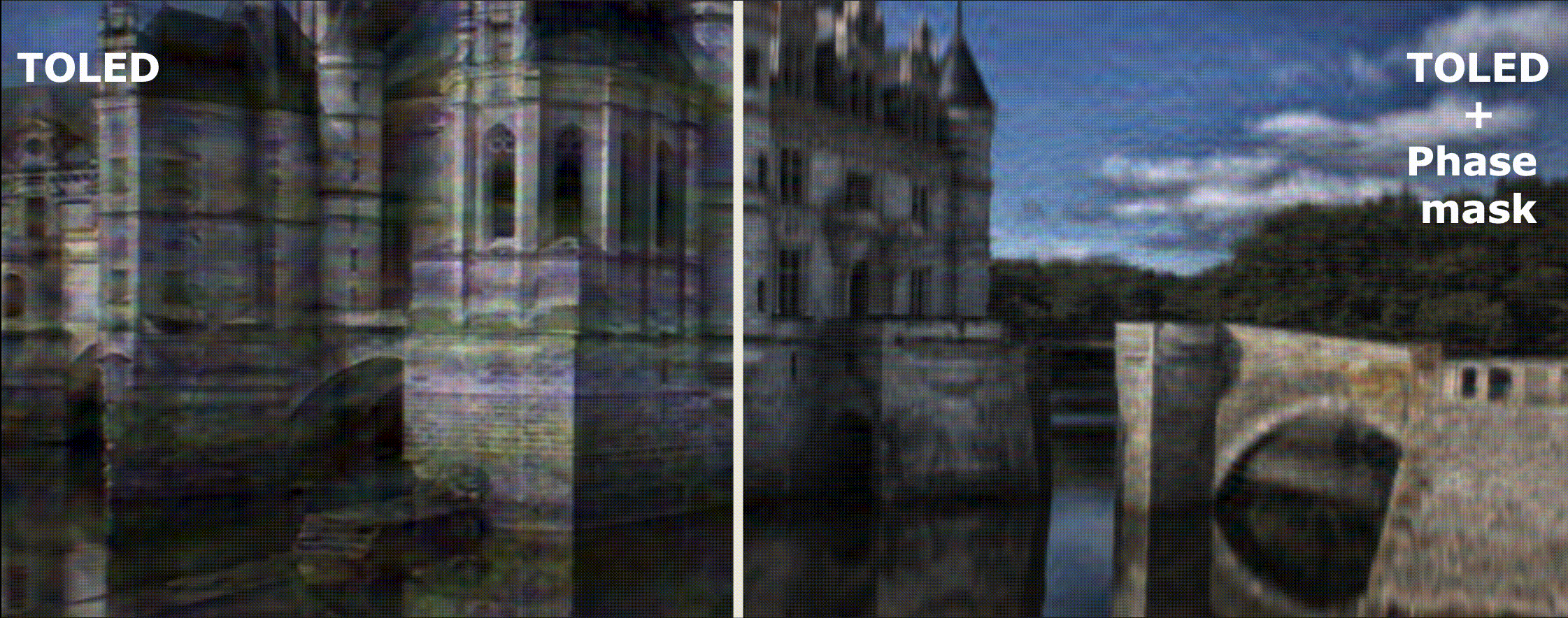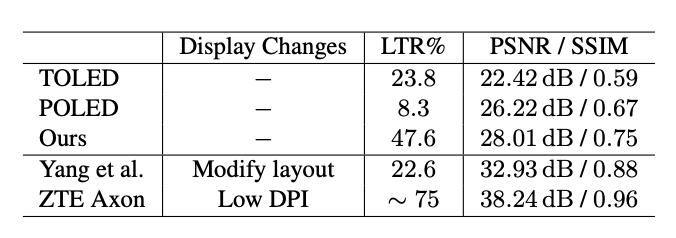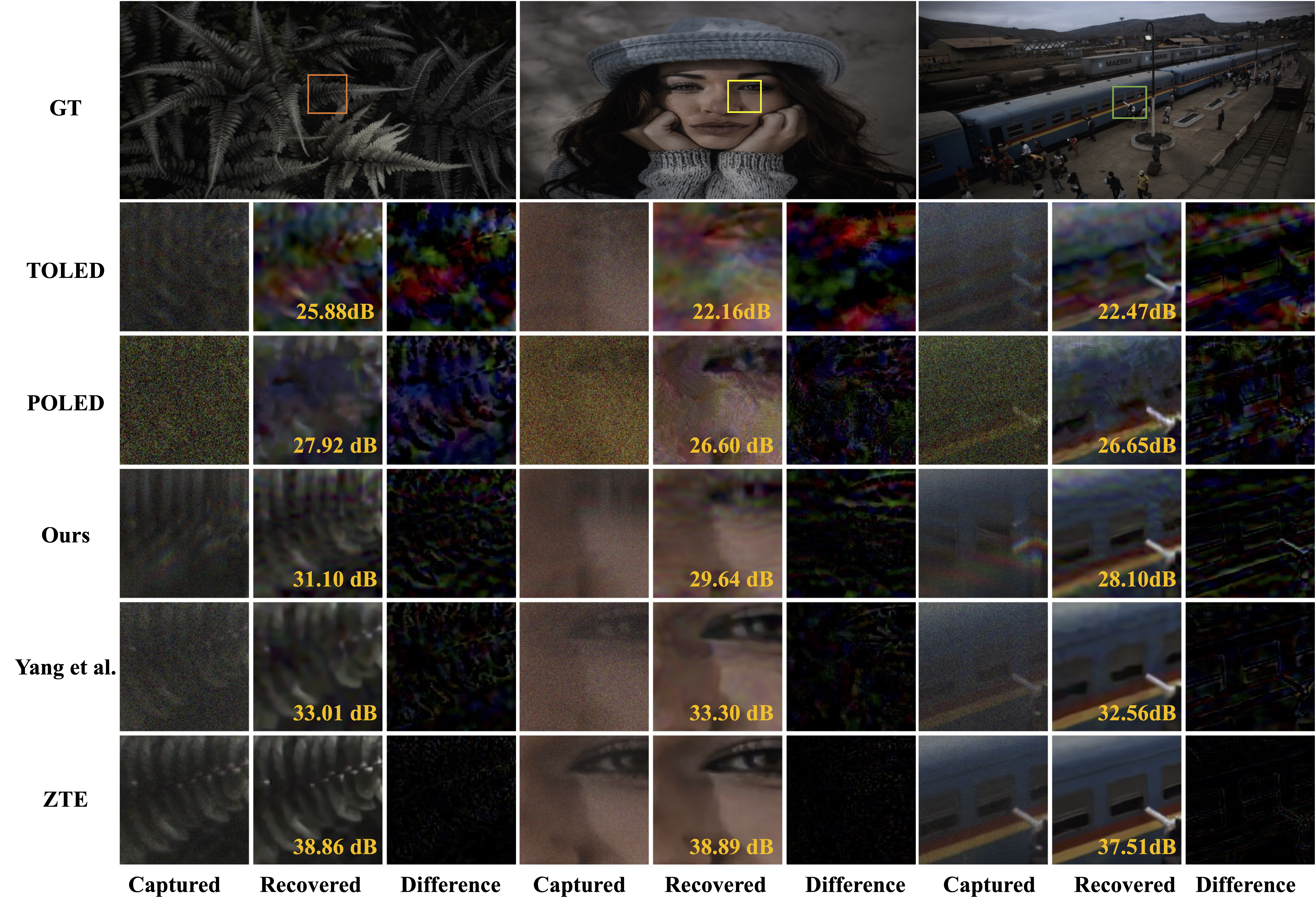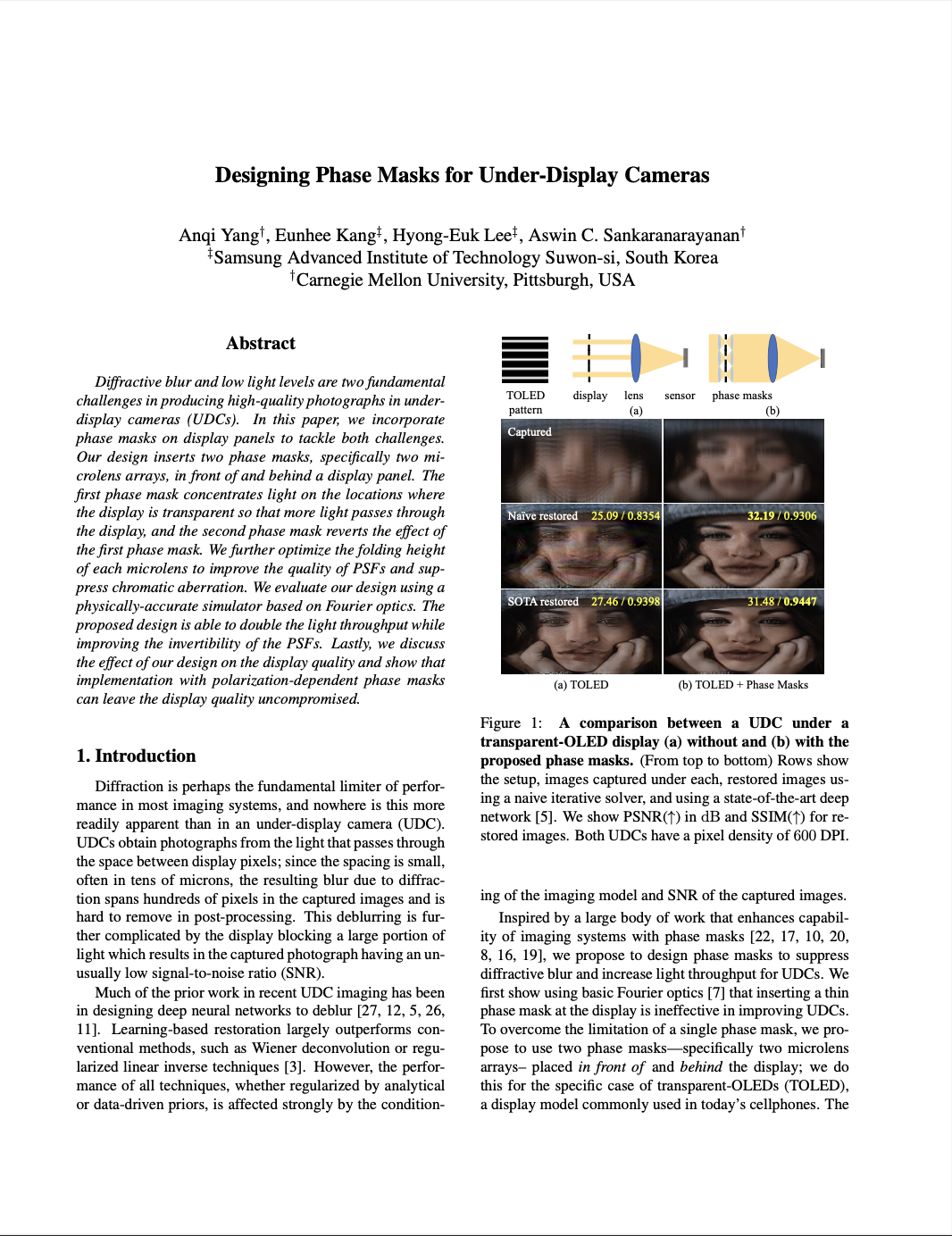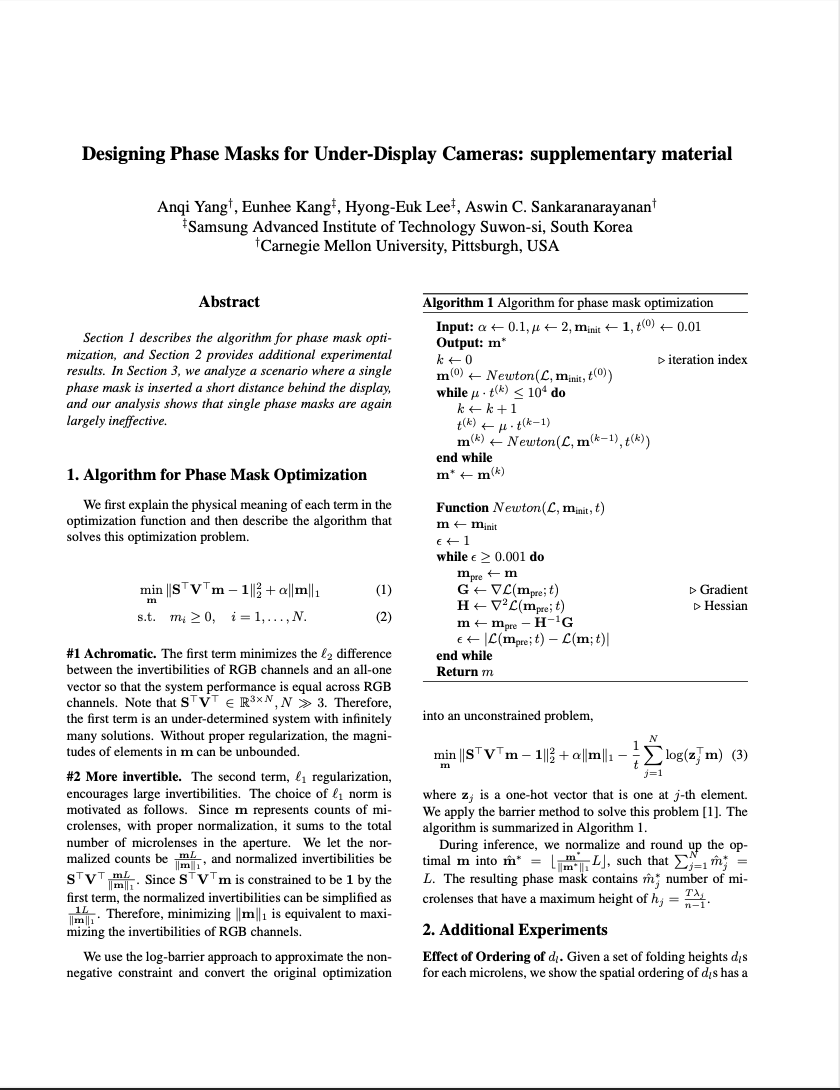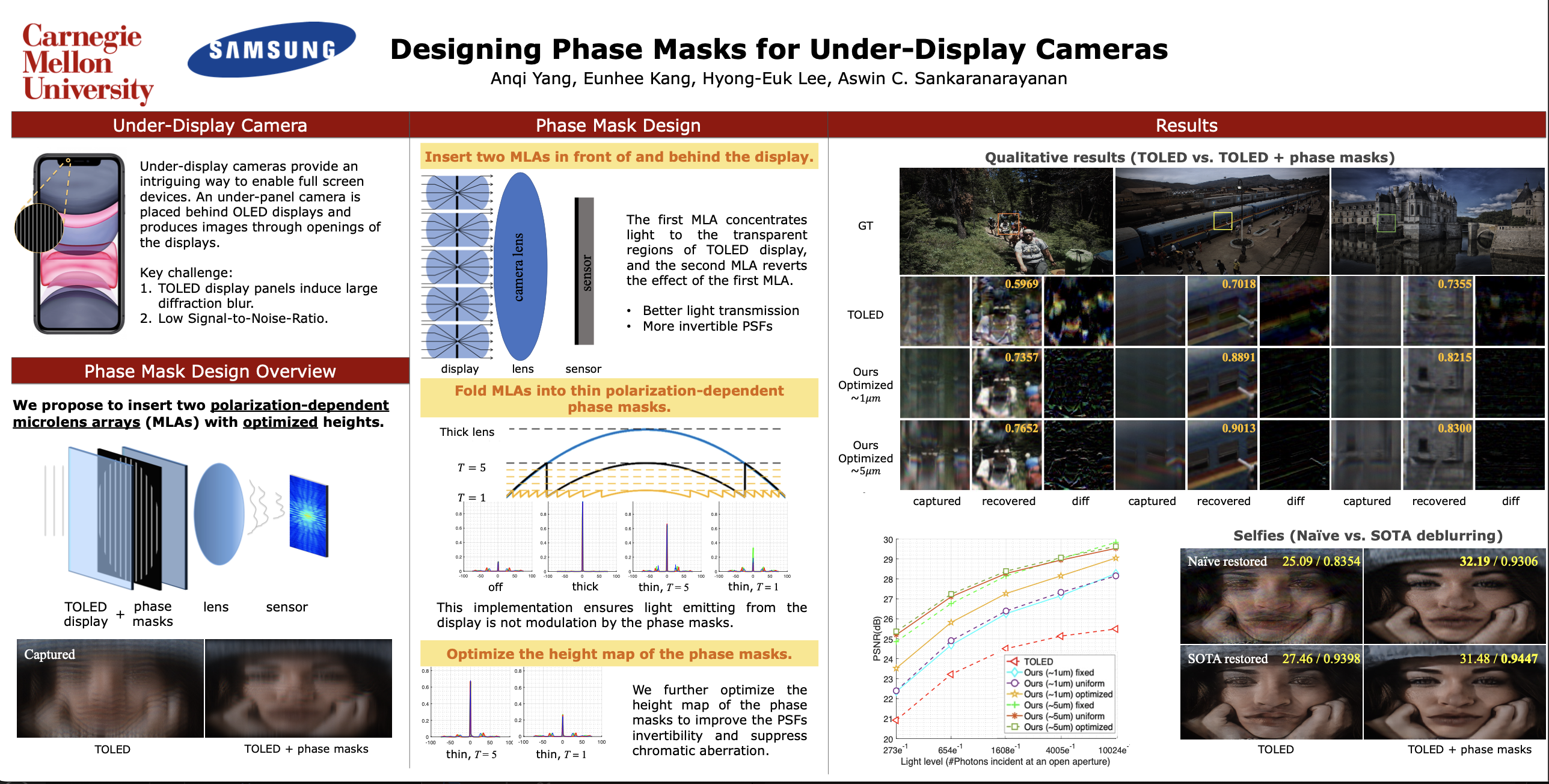Motivation
Diffractive blur in a UDC is produced by the small openings on the display pixels that have sizes comparable to the wavelength of incident light. Smaller opening results in a more severe diffraction blur. Our key intuition is to optically expand the size of display openings, i.e. let a larger portion of light pass through display openings, by inserting phase masks.
Proposed design: Double-sided microlens array
Our design is to place two microlens arrays (MLA) with equal focal lengths on both sides of the display such that the display panel lies in the focal plane of both MLAs, as shown in Figure (a) on the right. The first microlens array modulates light incident on the display so that, after propagating for some distance, most of the intensity of the wavefront is concentrated at the display openings. The second microlens array diverges the light back to a parallel beam. Compared to UDCs with a pure display, the proposed setup allows a larger portion of light to reach to camera's main lens and therefore improves the conditioning of incident wavefront and SNR. However, as shown in Figure (b), the microlens array in front of the display also modulates light emitting from the display pixels and negatively affects the display quality.

Alleviate the effect on display quality
Polarization-dependent implementation. To keep the display quality untouched, we implement MLAs as polarization-dependent optics and place a pair of orthogonal linear polarizers on both sides of the display panel. In this way, any light emitting from the display is free of modulation of the phase mask. A detailed working principle is described in the paper. Since polarization-dependent optical elements are only available in thin formats, we fold the microlens arrays into thin phase masks, as shown on the right.
Optimizing the height map of phase mask. A thin phase plate with a fixed height tends to produce chromatic aberration. We therefore optimize a different height for each microlens. This optimization improves the overall PSF quality across RGB channels and eliminates chromatic aberration.

Folding MLAs to thin phase plates


